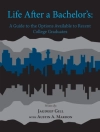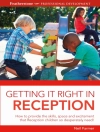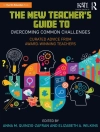‘Cultural proficiency challenges learning communities to go even deeper when inquiring about student barriers to success. This perspective is necessary to truly address the achievement and expectation gaps in our schools. Before we ask ourselves why our students are not succeeding, we must understand and examine our own perceptions and assumptions about them.’
—Timothy A. Bias, Administrator
Pomona Unified School District, CA
Close the achievement gap with equity-focused professional learning communities!
Professional learning communities (PLCs) can be a powerful force for creating equitable, inclusive schools where all students succeed. Integrating the four Tools of Cultural Proficiency with the PLC framework, this relevant guide offers school leaders, district administrators, and staff developers a collaborative approach to address bias and inequity.
Culturally Proficient Learning Communities discusses the impact of our history on cultural understanding and provides a wealth of practical PLC-building strategies—including assessment and inquiry-driven planning, instructional design, curriculum development, coaching, leadership, and shared decision making. The authors examine the goals, purpose, and process of creating and sustaining equity-focused PLCs through:
- Templates, protocols, activities, and rubrics for deconstructing inequity in student achievement
- Stories, tools, and thinking prompts to guide an inside-out transformation toward cultural proficiency
- An extended example of one school district′s journey in becoming a culturally proficient learning community
Schools that view diversity and differences as assets and opportunities will experience stronger holistic growth and increased academic achievement!
Table of Content
Foreword by Shirley M. Hord
Preface
Acknowledgments
About the Authors
Part 1. Getting Centered
1. Getting Centered With the Tools of Cultural Proficiency
2. Getting Centered With Our History
3. Getting Centered: The Evolution of Learning Communities
Part 2. Voices From the Field
4. Maple View: Sustaining a Culturally Proficient Learning Community
5. Assessing Cultural Knowledge Through Shared Personal Practice
6. Valuing Diversity Is a Reflection of Shared Beliefs, Values, and Vision
7. Managing the Dynamics of Difference Through Collaboration
8. Adapting to Diversity Through Supportive and Shared Conditions
9. Institutionalizing Cultural Knowledge Through Collective Learning
Part 3. Call to Action: Disturb the System Through Curiosity and Inquiry
10. Aligning Our Behaviors With Our Values
References
Index
About the author
Randall B. Lindsey is Emeritus Professor at California State University, Los Angeles. He has served as a teacher, an administrator, executive director of a non-profit corporation, as Interim Dean at California Lutheran University, as Distinguished Educator in Residence at Pepperdine University, and as Chair of the Education Department at the University of Redlands. All of Randy’s experiences have been in working with diverse populations and his area of study is the behavior of white people in multicultural settings. His Ph.D. is in Educational Leadership from Georgia State University, his Master of Arts in Teaching is in History Education from the University of Illinois, and his B.S. in Social Science Education is from Western Illinois University. He has served as a junior high school and high school teacher and as an administrator in charge of school desegregation efforts. At Cal State, L.A. he served as Chair of the Division of Administration and Counseling and as Director of the Regional Assistance Centers for Educational Equity, a regional race desegregation assistance center. With co-authors he has written several books and articles on applying the Cultural Proficiency Framework in various contexts.Email – [email protected] Website – CCPEP.org Twitter – @RBLindsey41












